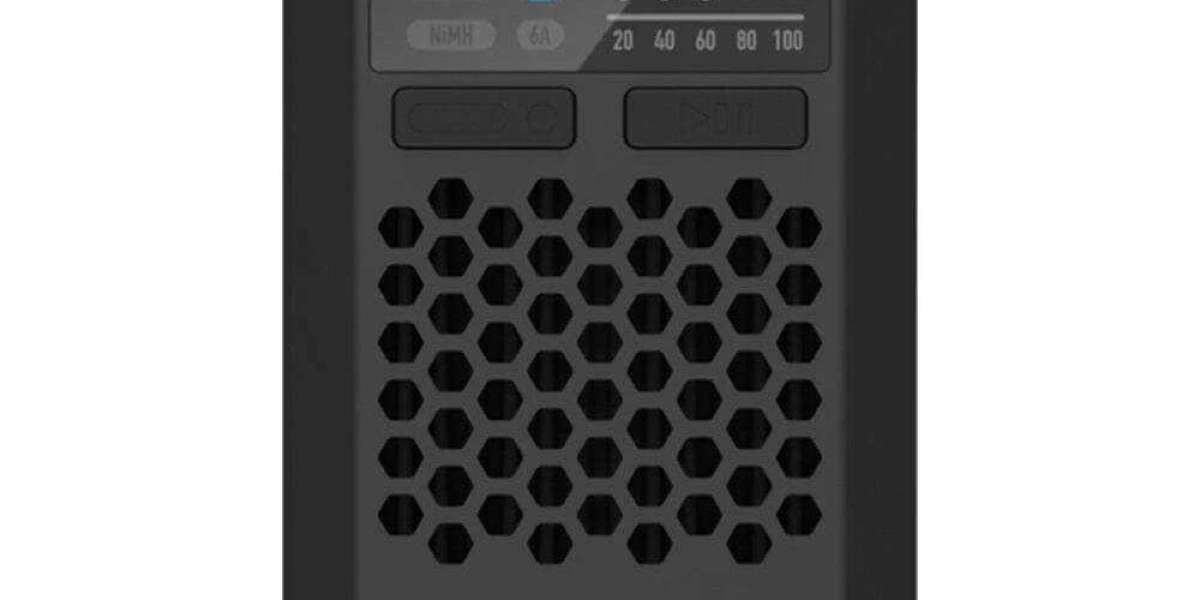In today's fast-paced professional world, where efficiency and reliability are paramount, having the right tools can make all the difference. When it comes to powering up devices and equipment, especially those reliant on Lithium Polymer (LiPo) batteries, selecting the appropriate charger is critical. Let's dive into the world of LiPo chargers and uncover their significance in various professional applications.
I. Introduction to Lipo Chargers
What are Lipo Chargers?
Lipo chargers are specialized devices designed to safely recharge Lithium Polymer batteries, commonly used in various professional applications.
Importance in Professional Industries
In professional industries like aerospace, automotive, and medical, where downtime is costly and reliability is crucial, using the right Lipo charger ensures optimal performance and longevity of batteries.
II. Understanding Lipo Batteries
Basics of Lipo Batteries
Lipo batteries are lightweight, high-energy-density rechargeable batteries known for their ability to provide high currents, making them ideal for professional equipment.
Unique Characteristics
Unlike traditional batteries, Lipo batteries are prone to damage if not charged properly, emphasizing the importance of understanding their unique characteristics.
Importance of Proper Charging
Proper charging techniques are vital to prevent damage, maximize battery lifespan, and ensure safety.
III. The Significance of Chargers in Professional Applications
Role in Industrial Settings
Lipo chargers play a crucial role in industrial settings, where uninterrupted power is essential for operations.
Safety Considerations
In professional environments, safety is paramount. Lipo chargers with built-in safety features mitigate risks associated with charging LiPo batteries.
IV. Types of Lipo Chargers
Single-Channel Chargers
Ideal for individual battery charging, single-channel chargers are simple and cost-effective solutions.
Multi-Channel Chargers
Multi-channel chargers can charge multiple batteries simultaneously, enhancing efficiency in busy professional environments.
High-Speed Chargers
High-speed chargers offer rapid charging capabilities, reducing downtime and increasing productivity.
V. Key Features to Look for
Charge Rate
The charge rate determines how quickly a battery can be recharged. Opt for chargers with adjustable charge rates to suit different battery capacities.
Compatibility with Battery Types
Ensure compatibility with various battery chemistries and sizes commonly used in professional applications.
Safety Features
Look for chargers with overcharging protection, temperature monitoring, and fire safety measures to mitigate potential risks.
VI. Advanced Charging Technologies
Pulse Charging
Pulse charging optimizes battery performance by pulsing current at specific intervals, enhancing charging efficiency and battery lifespan.
Balance Charging
Balance charging ensures each cell within a battery pack is charged evenly, preventing overcharging or undercharging, and maximizing battery performance.
Smart Charging Algorithms
Chargers equipped with smart charging algorithms adapt charging parameters based on battery condition, maximizing efficiency and safety.
VII. Application-Specific Chargers
Drones and UAVs
Chargers designed for drones and unmanned aerial vehicles (UAVs) offer specialized features tailored to the unique requirements of these applications.
RC Vehicles
Remote-controlled (RC) vehicle chargers provide fast and efficient charging solutions for high-performance batteries used in RC cars, boats, and aircraft.
Industrial Equipment
Chargers for industrial equipment are built to withstand harsh environments and provide reliable power for heavy-duty machinery and tools.
VIII. Best Practices for Charging Lipo Batteries
Storage Guidelines
Proper storage extends battery lifespan. Store LiPo batteries at room temperature in a fireproof container.
Temperature Considerations
Avoid charging batteries in extreme temperatures, as it can degrade performance and pose safety risks.
Charging Cycles
Follow manufacturer recommendations for charging cycles to maintain battery health and performance.
IX. Safety Precautions
Overcharging Protection
Chargers with overcharging protection automatically terminate charging when the battery reaches full capacity, preventing damage and safety hazards.
Temperature Monitoring
Integrated temperature sensors monitor battery temperature during charging, preventing overheating and potential fire hazards.
Fire Safety Measures
Fire-resistant materials and built-in fire suppression systems provide added safety during charging operations.
X. Common Issues and Troubleshooting
Battery Swelling
Battery swelling is often caused by overcharging or prolonged use. Discontinue use and safely dispose of swollen batteries.
Charging Errors
Charging errors may result from faulty connections or incompatible settings. Double-check connections and ensure charger settings match battery specifications.
Maintenance Tips
Regularly inspect batteries and chargers for signs of damage or wear. Clean terminals and connectors to maintain optimal performance.
XI. Regulatory Compliance
Industry Standards
Adherence to industry standards ensures product quality and safety. Look for chargers certified to meet relevant standards.
Legal Requirements
Compliance with local regulations and safety standards is essential to avoid penalties and ensure safe operation.
XII. Environmental Impact and Sustainability
Battery Recycling
Proper disposal and recycling of old or damaged batteries reduce environmental impact and promote sustainability.
Eco-Friendly Charging Solutions
Explore eco-friendly charging options, such as solar-powered chargers, to minimize carbon footprint.
XIII. Future Trends in Lipo Charging Technology
Advancements in Charging Efficiency
Continuous advancements in charging technology aim to improve efficiency, reduce charging times, and enhance battery performance.
Integration with IoT and AI
Integration with Internet of Things (IoT) and Artificial Intelligence (AI) enables smart charging solutions with predictive maintenance and optimized performance.
XIV. Case Studies: Real-World Applications
Aerospace Industry
Case studies in the aerospace industry demonstrate the critical role of Lipo chargers in powering unmanned aerial vehicles (UAVs) and satellite systems.
Automotive Manufacturing
Lipo chargers play a key role in automotive manufacturing processes, powering electric vehicles (EVs) and hybrid systems.
Medical Devices
In the medical field, reliable power is essential for life-saving equipment such as defibrillators and portable medical devices, highlighting the importance of Lipo chargers.
XV. Comparison of Leading Lipo Chargers
Performance Metrics
Compare chargers based on charging speed, efficiency, and safety features to find the best fit for your needs.
User Reviews
Consider user feedback and reviews to gauge product performance and reliability in real-world scenarios.
XVI. Budget Considerations and Cost Efficiency
Initial Investment vs. Long-Term Savings
While high-quality chargers may require a higher initial investment, they often offer long-term savings by prolonging battery lifespan and minimizing downtime.
Cost-Effective Solutions
Evaluate cost-effective solutions without compromising on safety or performance to achieve the best value for your investment.
XVII. Selecting the Right Charger for Your Needs
Assessing Requirements
Consider factors such as battery capacity, charging frequency, and application-specific needs when selecting a charger.
Consulting Industry Experts
Seek advice from industry experts or trusted sources to make informed decisions and choose the right charger for your specific requirements.
XVIII. Addressing Myths and Misconceptions
Lipo Battery Safety Concerns
Dispelling myths and addressing safety concerns surrounding Lipo batteries promotes awareness and safe usage practices.
Charging Myths Debunked
Clarify common misconceptions about charging practices to ensure users understand best practices for maintaining battery health and safety.
XIX. Summary
Recap of Key Points
Lipo chargers play a crucial role in professional settings, ensuring reliable power, maximizing battery lifespan, and prioritizing safety.
Importance of Proper Charging Practices
Adhering to proper charging practices is essential to optimize battery performance, prevent damage, and mitigate safety risks.
XX. FAQs (Frequently Asked Questions)
What are the risks of using improper chargers?
Improper chargers can lead to overcharging, overheating, or even fire hazards, posing safety risks to users and damaging batteries.
How can I extend the lifespan of my Lipo batteries?
To extend battery lifespan, avoid overcharging, store batteries properly, and follow manufacturer recommendations for charging cycles.
Are fast chargers safe for Lipo batteries?
Fast chargers can be safe for Lipo batteries when used correctly, but it's essential to ensure compatibility and monitor charging conditions to prevent damage.
How do I dispose of old or damaged Lipo batteries responsibly?
Dispose of old or damaged Lipo batteries at designated recycling centers or collection points to prevent environmental contamination and promote sustainability.






